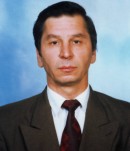Plenary Lecture
Strategies Regarding Development of Road Transport to Diminish Fuel Consumptions and Environmental Impacts

Professor Corneliu Cofaru
Automotive and Mechanical Engineering Department
Mechanical Engineering Faculty
Transilvania University of Brasov
Romania
E-mail: ccornel@unitbv.ro
Abstract: This research paper presents an overview of strategies focused on emission controlling related to motor vehicles and road traffic. Transport sector produces a variety of emissions, some of them being a direct greenhouse gas effect (mainly CO2), others, as, NOx, VOC, CO, and O3 having an indirect influence on warming, and particulates (PM). A part of these components have a warming effect, others have a cooling effect that need a careful analysis. As the lifetime of emission components differs, so does their impact on warming and cooling. The greenhouse gas emissions from transport is expected to rise to between 30 and 50%, by 2050 (today it is around 20-25%) and the radiative forcing is expected to increase.
The mobility of tomorrow will be more efficient: environment-friendly, quieter, safer and it will use clean resources. Highly efficient, innovative powertrain technologies and alternative fuels will play a central role in this respect.
Effective road transport scenarios must meet multiple objectives referring to motor vehicle and road traffic, such as:
• Reduction of CO2 emissions in order to diminish the impact on climate changes;
• Drastic reduction of chemical pollutants and noise emissions;
• Preservation or increase of power train’s energetic parameters;
• Providing security of fuel supply;
• Developing an effective sustainable mobility policy.
The options for achieving long-term (2050) CO2 emission reductions of 65 to 95% in the transport sector are: fuel CO2 efficiency; vehicle efficiency; driving efficiency; travelled distance.
Reviewing long-term climate targets, passenger cars and light vehicles’ emission reduction of up to 95%, the analysis on fuels becomes very prominent. New fuels should be very low-carbon or zero-carbon fuels, meaning that well-to-tank CO2 emissions are very limited. Thus, a substantial part of the climate mitigation challenge is shifted towards the energy production and refinery sectors.
Some scenarios of long-term development show combinations of vehicle types and fuel types, as:
• BEVs in combination with electricity obtined from (1) fossil fuel with carbon capture and storage (CCS) and (2) biomass, solar, wind, hydro, nuclear and others;
• FCEVs in combination with hydrogen from (1) fossil fuel with CCS and (2) biomass, solar, wind, hydro, nuclear and others;
• ICEV’s hybrids in combination with advanced biofuels.
Heavy-duty vehicles can be divided into long-haul trucks, distribution trucks and buses. CO2 emission reductions of 65 to 95% can be achieved by fuel efficiency; vehicle efficiency, driving efficiency and travelled distance.
The options for medium term (2020) for decreasing of the net greenhouse gas emissions (CO2) can be obtained by using active technologies determined by the decreasing of fuel consumption or by changing the fuel’s nature and characteristcs. Biofuels constitute a central pillar of sustainable mobility. They have the advantage of not requiring essentially new engines or a new infrastructure, since they can be added to fossil fuels in a controlled form. They can be obtained by using alternative fuels. Such alternative fuels can be: methan (NGV); LPG; biofuels as methyl or ethyl esters (biodiesels), biogases (digester gas, wood gas, gas from biomass gasification, ...), alcohols from biomass (methanol, ethanol, ...), vegetable oils, animal fats, etc., or even hydrogen.
Brief Biography of the Speaker: Corneliu Cofaru is a full Professor at the Automotive and Engine Department within the Mechanical Engineering Faculty from Transilvania University of Brasov, Romania. His area of expertise is the environmental aspects of internal combustion engines. He authored or co-authored over 240 scientific papers published in reviewed journals or presented at international conferences organized by FISITA, EAEC, SIAR, WSEAS etc. He wrote as author and co-author 26 books. Two of these are written in English and are entitled: “Materials-Energy Sustainable Development” published in 2002 and „Transport and Environmental Engineering” published at the Transilvania University Publishing House in 2007. He had the opportunity to manage international projects in Tempus and Leonardo da Vinci frame and he is a member of Romanian society of automotive engineers.